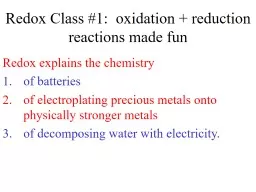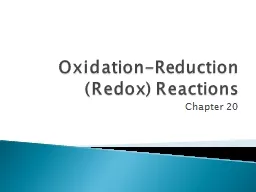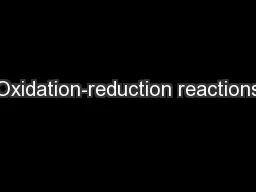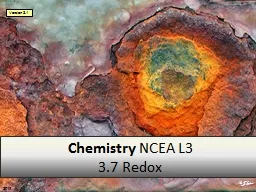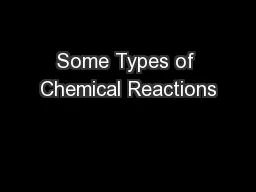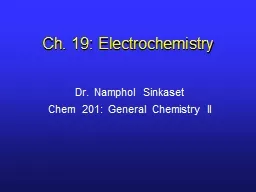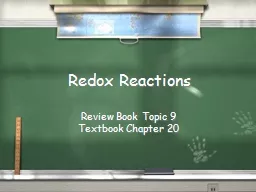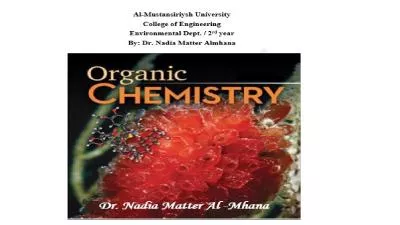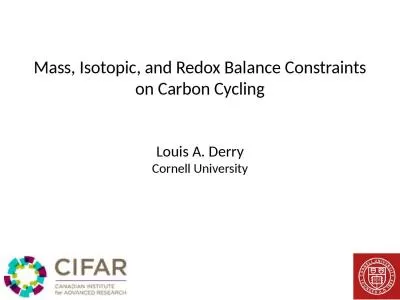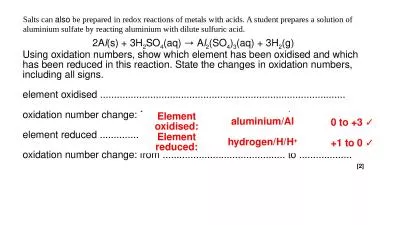PPT-Redox Class #1: oxidation reduction reactions made fun
Author : natalia-silvester | Published Date : 2018-11-15
123 Redox explains the chemistry behind batteries and electroplating precious metals onto strong base metals It also explains how to break apart water into hydrogen
Presentation Embed Code
Download Presentation
Download Presentation The PPT/PDF document "Redox Class #1: oxidation reduction r..." is the property of its rightful owner. Permission is granted to download and print the materials on this website for personal, non-commercial use only, and to display it on your personal computer provided you do not modify the materials and that you retain all copyright notices contained in the materials. By downloading content from our website, you accept the terms of this agreement.
Redox Class #1: oxidation reduction reactions made fun: Transcript
Download Rules Of Document
"Redox Class #1: oxidation reduction reactions made fun"The content belongs to its owner. You may download and print it for personal use, without modification, and keep all copyright notices. By downloading, you agree to these terms.
Related Documents

